If you have any furniture with a wood frame and loose cushions, it’s a good bet you you have a piece of furniture supported by webbing. And if your furniture is old and the webbing is original, it’s another good bet it’s not supporting your butt–or anyone else’s for that matter–the way it used to.
This is a problem we’ve been experiencing for a few months with the ’60s platform couch in our living room. The couch felt less than totally stable, and I was constantly noticing that the cushion slid forward when anyone sat on it. When we bought it, I didn’t really know to check under the cushions, but when I finally gave the seat some attention, I discovered the culprit was some mega stretched-out and partially deteriorated webbing.
Sure, this looks like it might make a comfy hammock, but in general you don’t want your butt to continue sinking toward the ground after you’ve already had a seat. It was past time for new webbing.
Luckily, webbing the seat of a couch is a pretty simple and relatively inexpensive project you can easily do yourself with only a couple tools and supplies. It didn’t make much mess, and the only things needed were a roll of jute webbing, two pair of pliers, a pneumatic staple gun, a some 5/8″ staples.
First, Justin removed the old webbing.
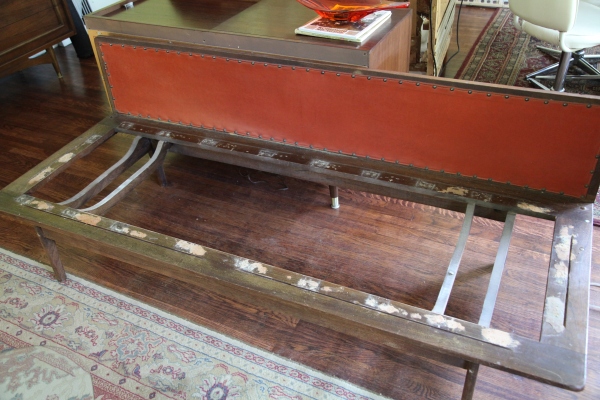
Then, it was just a matter of attaching the new webbing in a simple weave pattern. We made sure to cut the webbing a few inches longer than the seat on both ends. When securing it, we stapled each end, then folded the excess over and stapled again for added stability.
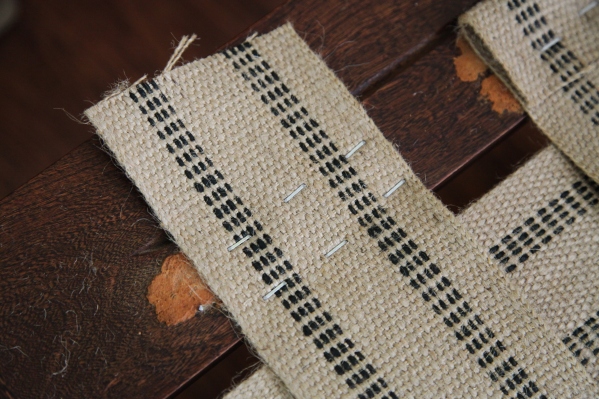
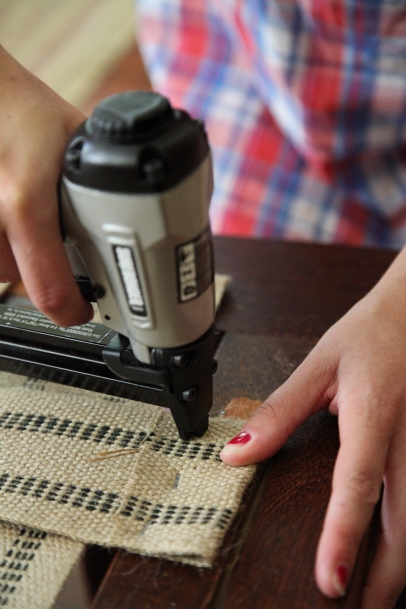
We finished the short side first.
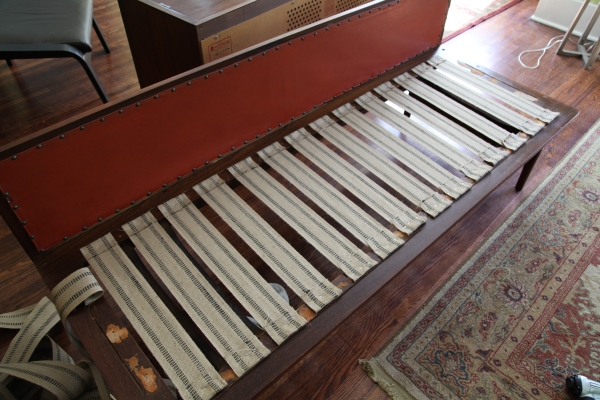
Using the same stapling technique, I weaved the longer pieces through the shorter pieces.
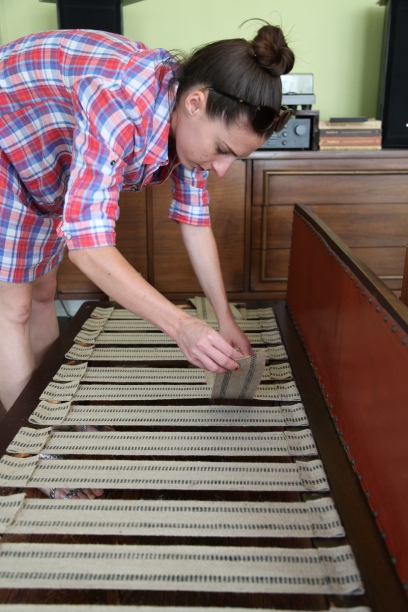
The only real trick to this is keeping the webbing taut. There is a contraption called a webbing stretcher that exists for this expressed purpose, and if you are one person doing this job, you will probably need one. Because Justin helped with this, he was able to pull while I stapled. What worked best was for him to grab the webbing using two sets of pliers rather than his two hands. He also sat on the floor and pushed the against the couch with his feet for even more superior resistance (I’ll leave you to ponder that image in your free time).
The webbing cost around $35 for 75 yards, and we used about 15 yards for this project, so all in all, it cost about $8 and took an hour of our weekend. Still, this small change made a world of difference in the comfort of our couch and probably the longevity of frame and cushions alike. As an added bonus, my husband got to play Justin Plierhands for a short while, and an evening at my place no longer means guests will enjoy saggy bottom with their sparkling conversation. Everybody wins.

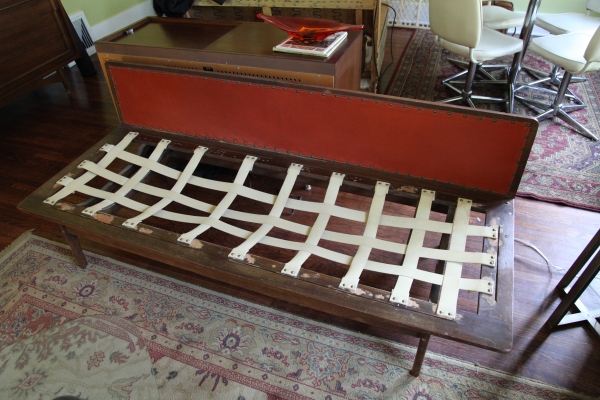
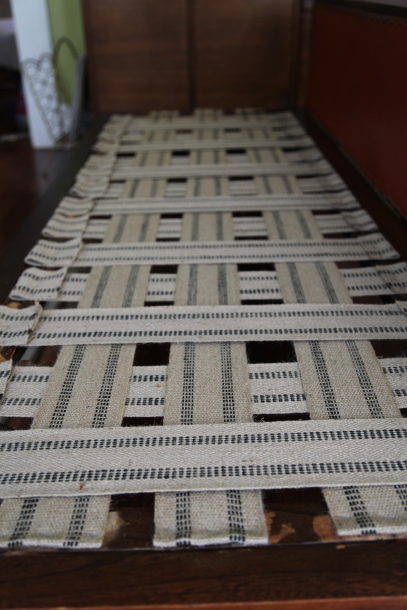
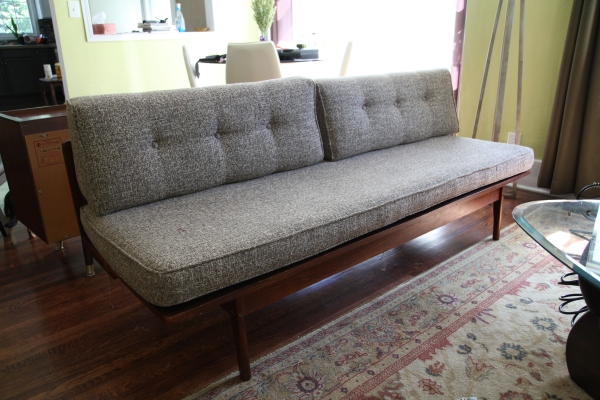
Gorgeous. I had to learn about webbing when I found an old chair in pieces in my attic. Turned out to be a pretty cool project… just like this one is.
LikeLike
Thanks! Your attic sounds pretty awesome. 🙂 Webbing is kind of fun–it’s not too hard, but you feel very accomplished, and it makes a big difference!
LikeLike
Well renovated sofa, no more sinking of the butt, complete comfort, nice(: simple things that can improve and perfect the comfort of the cushions using this web material.
LikeLike
No more sinking butt for sure! 🙂 Yes, this was definitely a case of a small thing that made a big impact.
LikeLike
How is it holding up? staples still anchored well? I’m building a daybed right now.
LikeLike
Hey Eric, I’ve since moved and sold this couch, so I can’t exactly tell you, but I would hope and bet it’s still holding up. Good luck with your daybed, sounds like a cool project!
LikeLike